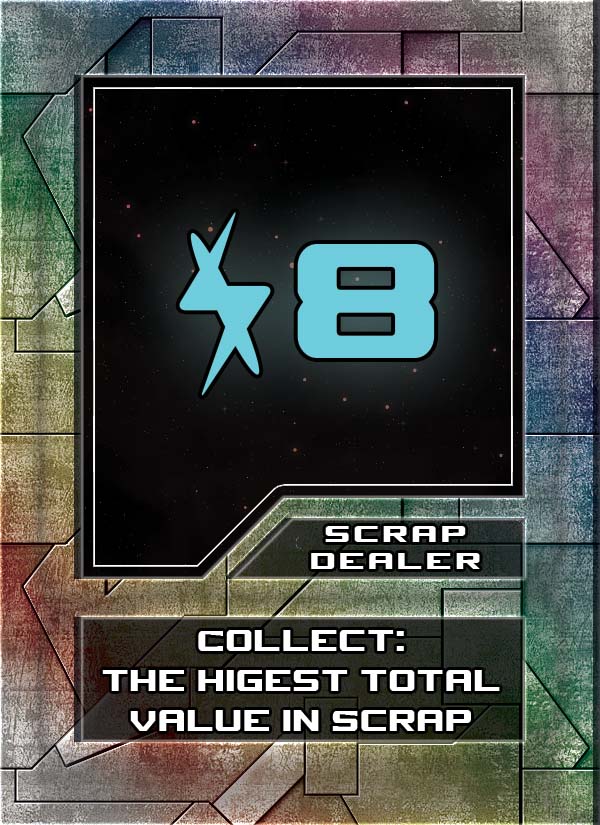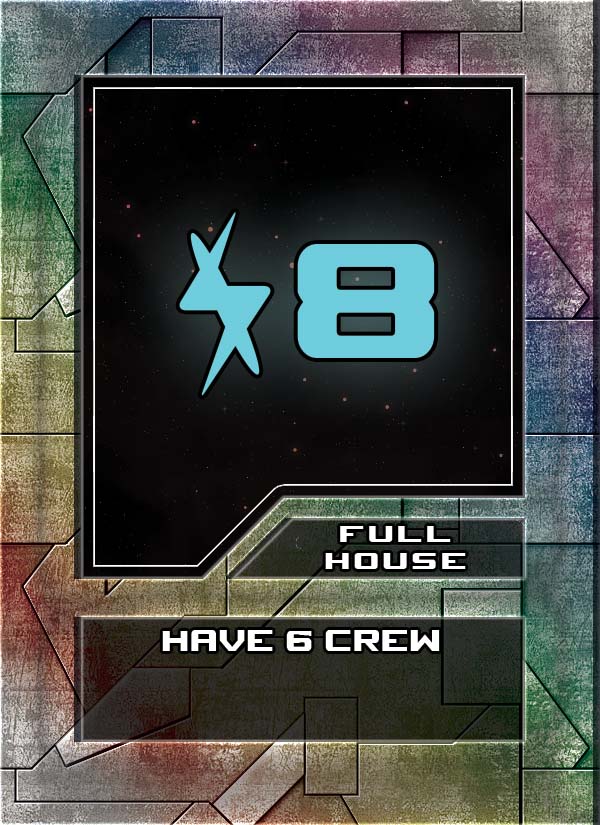- In the earliest iterations of Space Junkers, selecting which salvage to collect was a simple task of numeric literacy. If cargo A was worth 4 and cargo B was worth 2, you would always choose A.
- This was not problematic in and of itself; but in practice what it meant was the salvage part of the game was reduced to keeping score of how well you did in the mission planning part of the game.
- We addressed by introducing salvaging options that were not easily reduced into a simple metric. Consider the following examples:
- A VIP worth 5 points is always more valuable than a survivor worth 1 point – but it’s not entirely clear whether a VIP worth 5 points is more valuable than a Trained Crew Member who might provide value in future salvages.
- Similarly 4 points of cargo is very valuable; but from game to game it will vary whether or not that 4 points provides more value than a particular Tech item which give you first choice in a future salvage.
- By creating these situations we’ve introduced meaningful decisions into the salvage part of the game.
- We added further depth to these decisions by creating asymmetries between players
- The simplest example of this alien artifacts; for a player with no alien artefacts a single alien artefact is only worth 1 point, but a player who already has 4 alien artefacts would gain 9 more points from an additional alien artefact.
- A similar effect can be seen with cargo sets; by creating an end of game bonus for collecting the most salvage of a particular set, players might be incentivised to forgo higher value savage to collect more salvage of a particular set.
- The most complex of these asymmetries between players are the mission cards which award a player for certain end game conditions; this can create a situation where a player might adopt that would be completely unviable for another player.
Quick note: This blog has been very quiet of late, but look for it to heat up as we zero in on a launch window for Space Junkers



